Chamaecyparis: [Cultivation, Associations, Pests and Diseases]
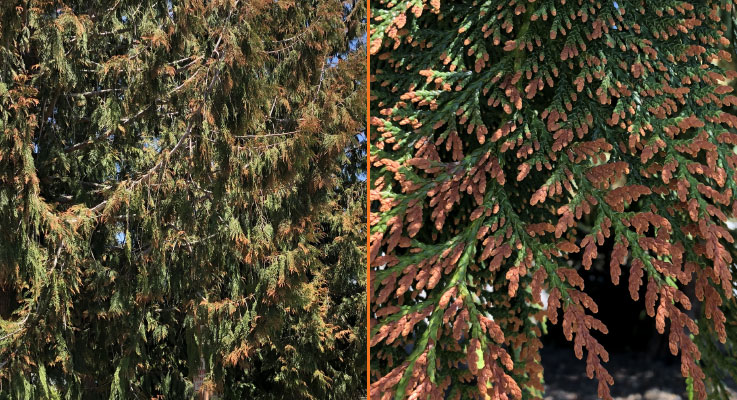
Important points when planting Chamaecyparis
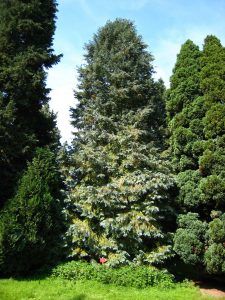 Where to sow? Half shade. Little direct sunlight.
Where to sow? Half shade. Little direct sunlight.- When? In spring or fall.
- How do we prepare the land? removed. Any type of soil. Slightly acidic, fertile with sand and peat based compost .
- How do we water? Ideal, by drip.
- How often do we water? In summer, once a week. In winter, very little or almost nothing.
- Plagues and diseases? Mites and mealybugs. Phytophthora lateralis.
The genus chamaecyparis belongs to the Cupressaceae family and is made up of about 6 species of trees native to Japan, America and the island of Formosa (Taiwan).
They are trees similar to cypresses, with a conical crown, but with more elegant leaves, needle-shaped when they are young and with scales when they are adults.
Its name comes from the Greek «chamai» (small) and «kyparissia» (cypress), although they are not small plants. It is also known by the name of “false cypress”.
When to sow a Chamaecyparis?
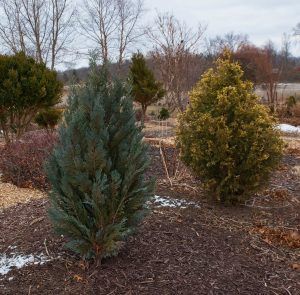 Chamaecyparis should be planted in spring or fall. But, because it is a plant of the cypress genus, it can be easy to grow it all year round, it is with special care for it.
Chamaecyparis should be planted in spring or fall. But, because it is a plant of the cypress genus, it can be easy to grow it all year round, it is with special care for it.
If sowing is done in the hottest months, it is necessary to be careful to check that the plant ‘s soil is moist enough.
It is very important that on very hot days you cannot forget about watering. Plants, with high temperatures, will also take root earlier, but you have to give them water often .
After harvesting them from chamaecyparis, in autumn, the seeds should be allowed to dry well in a warm room or oven at a temperature of 32 to 41°C. Stratify them also at 4-5°C. for 2 or three months. That helps germination.
Where to plant a Chamaecyparis?
Chamaecyparis needs semi-shade exposure and a humid climate, since too much direct sun can damage its leaves.
They are used as windbreaks, on walkways, in rock gardens or even on balconies and terraces (dwarf varieties). They are also suitable for bonsai.
The Lawsoniana species is a perfect Chamaecyparis tree to plant in a meadow, as it will provide good shade and the smaller size specimens are perfect for decorating rockeries and smaller gardens.
The ambient humidity must be high. This part is not at all complicated, since the very density of the branches and leaves it has helps to maintain a high degree of temperature.
How to prepare the land?
As for the soil, Chamaecyparis usually works with any type of substrate, although it prefers slightly acidic, fertile, loose and very well drained ones.
The ideal combination for a perfect soil is 1/3 sand and 1/3 peat. In this way, it is guaranteed to have a soft texture, but it does not fail us in the amount of organic matter it needs to incorporate nutrients.
How do we water a Chamaecyparis?
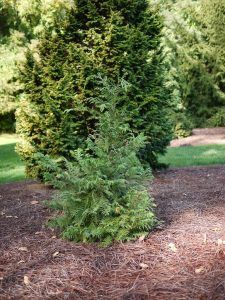 This plant should be watered once a week, trying to be very careful not to flood it, as this would cause problems and diseases for Chamaecyparis.
This plant should be watered once a week, trying to be very careful not to flood it, as this would cause problems and diseases for Chamaecyparis.
If the sand and peat requirements of the soil where the Chamaecyparis is to be grown are respected, you are probably already assured that it has good drainage. If the irrigation water accumulates, we will have problems.
Let the top layer of soil in the pot dry slightly between waterings.In winter hardly water. It does not like excess lime, so it is important to irrigate with quality water, rainwater or acidified using citric acid.
How do we plant a Chamaecyparis step by step?
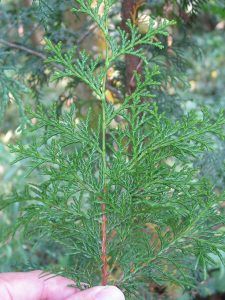 The chamaecyparis plant can reproduce through seeds, although this is a complicated process, so it is recommended to acquire the specimens in nurseries and garden centers.
The chamaecyparis plant can reproduce through seeds, although this is a complicated process, so it is recommended to acquire the specimens in nurseries and garden centers.
All varieties of chamaecyparis are obtained either by cuttings, by layering or by grafting.The best thing is to buy the specimens already grown or in the process of growth and transplant them in the garden or the space that has been designated.
However, the best way to propagate chamaecyparis is by taking 10 cm long cuttings, with a piece of stem attached, throughout the spring.
Remove the shoots from the last 2.5 cm and insert the cuttings in pots with a diameter of 8 cm, filled with compost made with equal parts of peat and sand.
Place the containers in a cool environment and when they have grown roots, plant in pots with compost made from black earth and place in a cool and sheltered place.In spring, repot into larger pots, with homemade organic matter such as black earth-based compost.
What favorable associations does it have?
Like all perennials, chamaecyparis will grow best with no other plants around.
But if spring flower beds are planted in the same container as dwarf conifers, chamaecyparis will be suitable for this purpose.
You can also place the conifer in a container and transplant the other larger pot in spring, when the roots have filled the pot.
What pests and diseases attack Chamaecyparis?
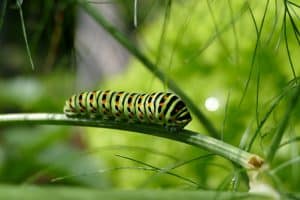 It can be said that chamaecyparis is a fairly resistant plant that does not usually suffer from diseases.
It can be said that chamaecyparis is a fairly resistant plant that does not usually suffer from diseases.
However, caterpillars sometimes devour its leaves. Likewise, there are mites and mealybugs that can lodge in its leaves.
In its natural environment, the plant is seriously threatened by a root disease caused by the fungus Phytophthora lateralis.This disease is a problem for horticultural plantations in some parts of North America.
The tree is also attacked, although not to the same extent, by other species of Phytophthora.Infection with Phytophthora lateralis begins when the mycelium, from a germinated spore, invades the roots and spreads through the internal bark and change around the base of the tree.
The infected tissue dies and effectively surrounds the tree. Large trees are more likely to be infected than small ones, due to larger root areas (although all trees on the edges of streams will succumb).
However, large trees can often live with infections for a longer period (up to several years).If any plague or disease appears, the tree can be cleaned.
To avoid these problems, you have to keep it in a well-ventilated area and take care of the plant from excess moisture that can cause fungi.
How long does a chamaecyparis live?
This is a long-lived species that could easily reach 500 years under ideal conditions.
How long does it take for a chamaecyparis to grow?
It grows slowly, so do not be alarmed if it takes more than 10 years to reach its maximum height.
How long does it take to produce fruit?
From 5 years old it will be able to produce fruit and sometimes it usually needs more time.
Can it be grown in a pot?
Yes, it can be worked in a pot, controlling its growth by means of pruning.
In any case, a timely transplant must be ensured as its roots expand further.
How many times does a chamaecyparis produce fruit?
Under ideal conditions, fruits can be obtained between 2 and 3 times per year.
Should a chamaecyparis be pollinated to obtain fruit?
No need to pollinate. It carries out this process through the wind and each specimen has female and male flowers arranged.
How cold can a chamaecyparis tolerate?
Being a conifer, it is well prepared to withstand the cold of winter and some frost. It is estimated that it survives without problems at -20° C.
How many chamaecyparis can be planted per hectare?
This species is very useful for reforestation and in each hectare between 200 and 300 specimens can be cultivated.
What type of fertilizer does a chamaecyparis need?
Work with organic fertilizers annually during adulthood and with special liquid fertilizers for conifers when young, especially if it is in a pot.
How much heat and/or drought can a chamaecyparis tolerate?
It adapts well to the hottest summer temperatures, but if it is a young specimen it is better to keep it in the shade.
It is also possible that it can withstand droughts. However, in extreme heat you have to water enough so that its leaves do not turn brown.
Bibliography and references
- Lesniewicz, Paul. (1982). Bonsai: miniature trees. Editorial Reverté. Barcelona, Spain.
- Scott, Katie; Willis, Kathy. (2017). Botanicum. Ocean Crossing. Mexico City-Mexico.
- Buczacki, Stefan. (2000). winter plants. Akal Editions. Madrid Spain.
- Hernandez Padilla, Hugo. (2006). Production and commercialization of cedrela (Chamaecyparis thyoides ericoides) and chimansimpar (Chamaecyparis lawsoniana ellwoodii) in the municipality of Xicotepec, Puebla. Autonomous University of Chapingo. Forest Sciences Division. Chapingo-Mexico. Reproduced from: http://files.departamento-de-productos-forest.webnode.es/200001676-7c5b77d54c/Hernandez%20Padilla%20Hugo%202006.pdf
- Bahamonde, Hector Alejandro; Peri, Pablo Luis; Gargaglione, Veronica Beatrice; Diaz, Boris Gaston; Monelos, Lucas; Almonacid, Leandro. (2018). Urban woodland in southern Patagonia. Main species and their management. Provincial Agrarian Council. Santa Cruz, Argentina. Reproduced from: https://inta.gob.ar/sites/default/files/inta_arbolado_urbano_en_patagonia_sur_919.pdf

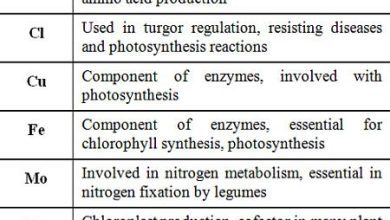
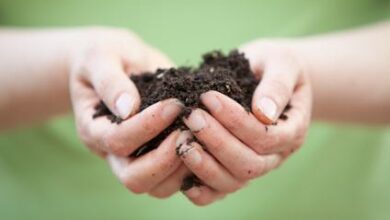
![Photo of Pear Tree Pests and Diseases: [Detection, Causes and Solutions]](https://www.complete-gardening.com/wp-content/uploads/2022/08/pear-tree-pests-and-diseases-detection-causes-and-solutions-390x220.jpg)
![Photo of Hens: [Types, Laying, Feeding and Care]](https://www.complete-gardening.com/wp-content/uploads/2022/08/hens-types-laying-feeding-and-care-390x220.png)